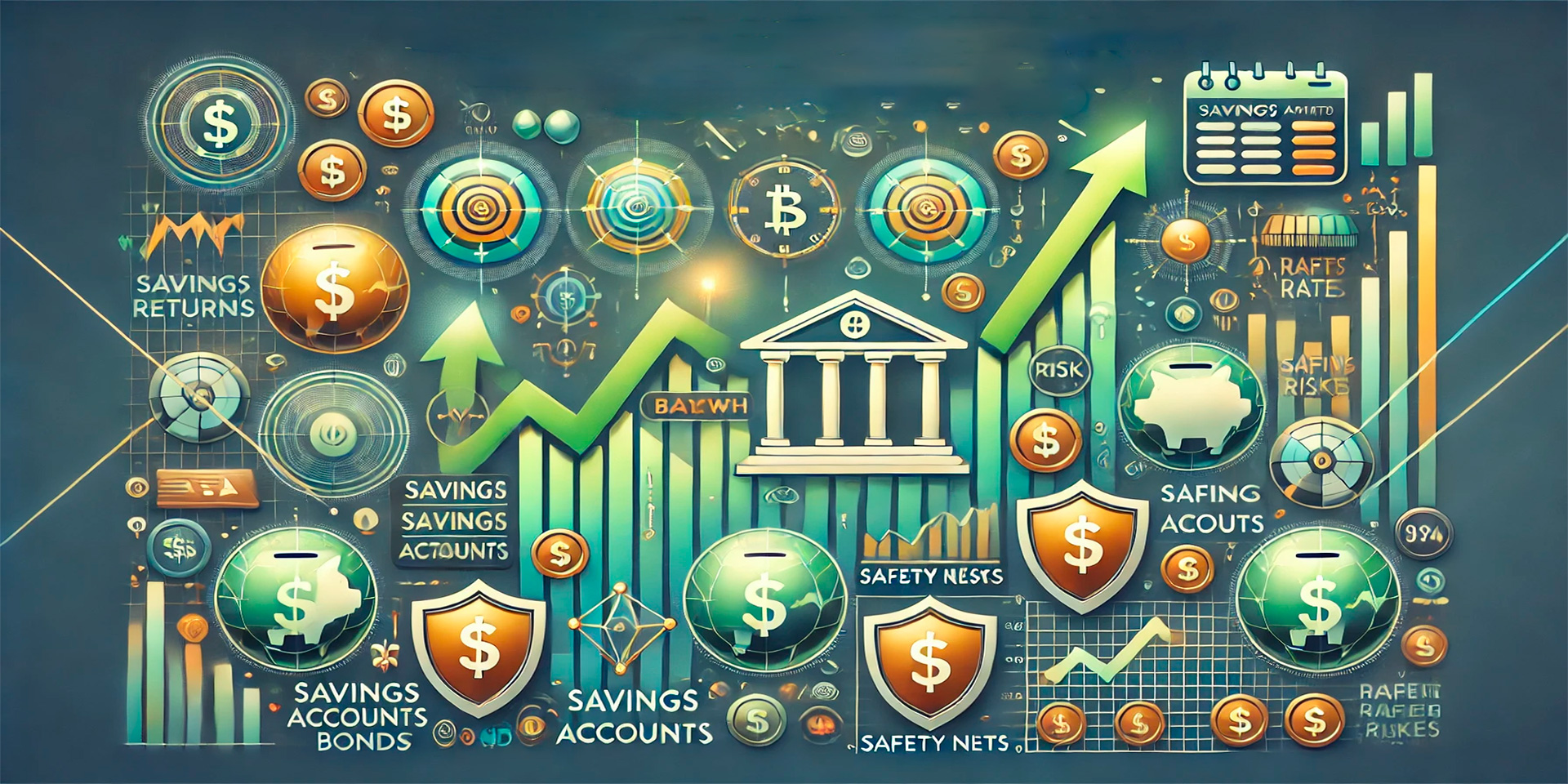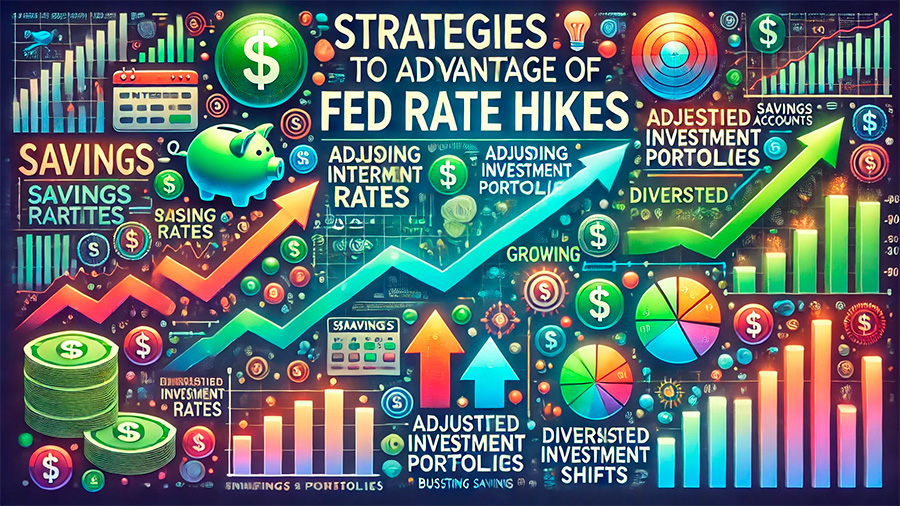
When the Federal Reserve (Fed) raises interest rates, it impacts the entire financial landscape, influencing everything from the cost of borrowing to the returns on savings accounts and investments. Higher interest rates generally make saving more attractive by offering better returns on savings accounts, certificates of deposit (CDs), and other fixed-income products. However, they can also affect stock market performance and bond yields, leading investors to adjust their portfolios in response to these changes. For both savers and investors, understanding how Fed rate hikes influence behavior is key to making informed financial decisions.
Why Does the Fed Raise Interest Rates?
The Federal Reserve increases interest rates to control inflation and prevent the economy from overheating. By raising the federal funds rate—the rate at which banks borrow from each other—the Fed makes borrowing more expensive for consumers and businesses. This reduces spending, slows economic growth, and helps stabilize prices. For savers and investors, these higher rates often lead to better returns on savings and more attractive yields on certain investments, but they also bring challenges for riskier assets like stocks.
How Fed Rate Hikes Make Saving More Attractive
One of the most direct effects of Fed rate hikes is the increase in interest rates for savings products like savings accounts, CDs, and money market accounts. As interest rates rise, banks offer higher returns on these accounts, providing savers with an incentive to set aside more money. Higher rates on savings accounts can make them a more appealing option for those looking for a low-risk way to grow their money, especially compared to riskier investments like stocks.
1. Higher Returns on Savings Accounts
When the Fed raises rates, banks typically follow suit by increasing the interest rates they offer on savings accounts. This means that money sitting in a traditional savings account earns more interest, helping savers grow their funds faster without taking on significant risk. For example, an account that previously earned 0.5% interest could see that rate rise to 1.5% or higher during periods of rate hikes, providing a better return on idle cash.
2. Better Yields on Certificates of Deposit (CDs)
Certificates of deposit (CDs) are another savings product that becomes more attractive when interest rates rise. CDs offer a fixed interest rate over a specific term, and during times of higher rates, the returns on CDs increase. Savers willing to lock their money in a CD for a set period, such as 6 months or 2 years, can take advantage of these higher yields, which are often better than the rates offered on standard savings accounts.
3. Money Market Accounts and Treasury Bonds
Money market accounts and Treasury bonds also benefit from Fed rate hikes. Money market accounts, which are similar to savings accounts but often offer higher interest rates, become more lucrative as rates rise. Meanwhile, Treasury bonds, particularly shorter-term bonds, see higher yields, offering a low-risk, government-backed option for those looking to earn more on their savings.

The Impact of Fed Rate Hikes on Investments
While Fed rate hikes can boost returns on savings products, they also influence investments, particularly stocks and bonds. As rates rise, investors may shift their focus from riskier assets, like stocks, to safer, income-generating investments. This shift can lead to changes in market behavior, as well as opportunities for those looking to adjust their investment portfolios.
1. Effects on Stock Market Performance
Higher interest rates tend to put downward pressure on the stock market. When borrowing costs increase, businesses face higher expenses, which can reduce profits and growth potential. As a result, stock prices may decline, particularly in high-growth sectors like technology, where companies rely more on debt financing. Investors may become more cautious, seeking safer assets like bonds or dividend-paying stocks to reduce risk in a rising rate environment.
Additionally, as interest rates rise, fixed-income investments become more attractive, drawing money away from equities. This shift can lead to market volatility, particularly in sectors that are sensitive to higher interest rates.
2. Bonds and Fixed-Income Investments
Rising interest rates have a direct impact on bonds and other fixed-income investments. When rates go up, the price of existing bonds typically falls, as newer bonds are issued with higher yields. However, this creates an opportunity for investors looking to purchase bonds at a discount, particularly if they believe rates will stabilize or decline in the future. Additionally, short-term bonds tend to perform better during periods of rising rates, as their shorter duration makes them less sensitive to rate fluctuations.
3. Dividend-Paying Stocks as a Hedge
Dividend-paying stocks, particularly those in stable, established industries like utilities or consumer goods, can offer a hedge against rising interest rates. These companies often generate consistent cash flow and return a portion of their profits to shareholders in the form of dividends. As interest rates rise and stock prices decline, the dividend yield on these stocks may become more attractive, providing income in a volatile market.

Strategies to Take Advantage of Fed Rate Hikes
To benefit from Fed rate hikes, savers and investors need to adapt their strategies to capitalize on higher interest rates while managing potential risks. Whether you’re focused on boosting your savings or adjusting your investment portfolio, there are several ways to take advantage of a rising rate environment.
1. Boost Your Savings Contributions
When savings accounts, CDs, and money market accounts offer higher interest rates, it’s a good time to increase your savings contributions. By putting more money into these accounts, you can take advantage of compounding interest and grow your savings faster. This is especially important for those building an emergency fund or saving for short-term goals, as higher interest rates can provide a safe, steady return on your funds.
2. Rebalance Your Investment Portfolio
As interest rates rise, it may be necessary to rebalance your investment portfolio to reduce exposure to riskier assets and focus more on fixed-income investments or dividend-paying stocks. Consider increasing your allocation to bonds, particularly short-term bonds, which are less sensitive to rising rates. You can also explore income-generating stocks that offer attractive dividend yields, providing a stable return even in a fluctuating market.
3. Lock in Higher Yields with CDs and Treasury Bonds
If you’re looking for a safe way to grow your money during periods of higher interest rates, consider locking in higher yields with long-term CDs or Treasury bonds. These options provide guaranteed returns and protect your principal from market volatility. With rates rising, you can secure a fixed rate now that offers better returns than a standard savings account.
4. Avoid Overextending on Credit
While rising interest rates can benefit savers, they also increase the cost of borrowing. If you have variable-rate loans, such as credit card debt or adjustable-rate mortgages, your interest payments may rise as the Fed hikes rates. To avoid overextending yourself, focus on paying down high-interest debt and avoid taking on new loans with variable rates. Fixed-rate loans may be a better option if you need to borrow, as they protect you from future rate increases.
The Challenges of Fed Rate Hikes for Borrowers
While higher rates can boost savings, they also make borrowing more expensive. Mortgages, car loans, and personal loans become costlier as interest rates rise, making it harder for consumers to afford large purchases. For existing borrowers with variable-rate loans, payments may increase as rates climb, potentially straining household budgets.
What Borrowers Should Do
- Consider Refinancing: If you have high-interest debt, refinancing into a fixed-rate loan before rates rise further can help lock in lower payments.
- Pay Down Debt: Focus on reducing variable-rate debt to avoid higher payments in the future. Paying off high-interest loans should be a priority during periods of rising rates.
- Delay Major Purchases: If possible, consider delaying large purchases that require financing, such as a home or car, until rates stabilize or decrease. This can help you avoid higher borrowing costs.
Conclusion: Navigating Fed Rate Hikes for Better Financial Outcomes
Fed rate hikes have wide-reaching effects on both savings and investments. By understanding how these changes impact interest rates, stock markets, and borrowing costs, you can make more informed decisions to improve your financial outcomes. Whether it’s taking advantage of higher savings yields, adjusting your investment portfolio, or paying down debt, proactive planning during periods of rising rates can help you navigate the changing economic landscape and maximize your financial success.
